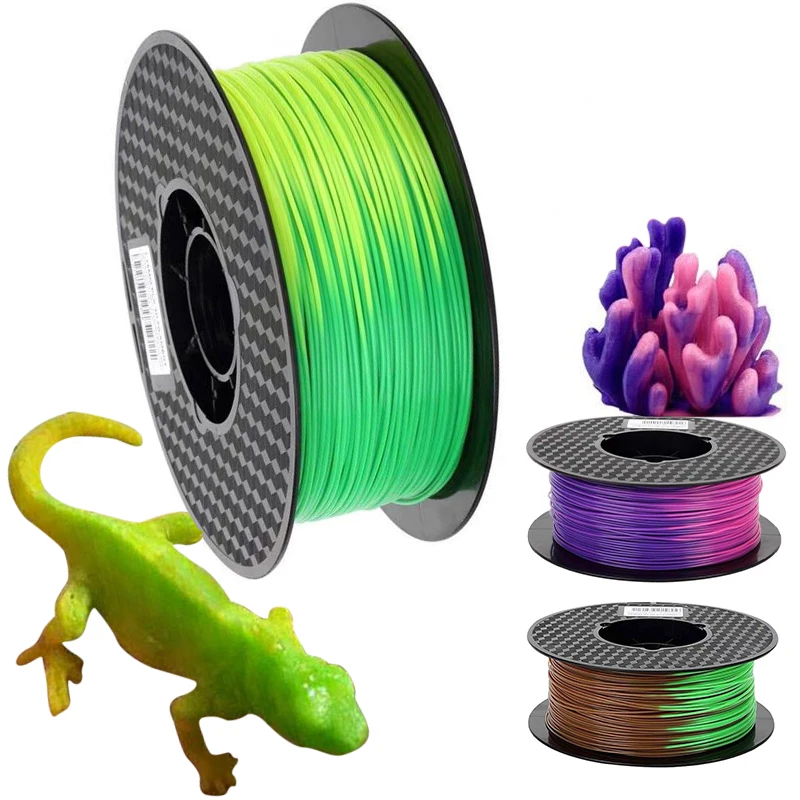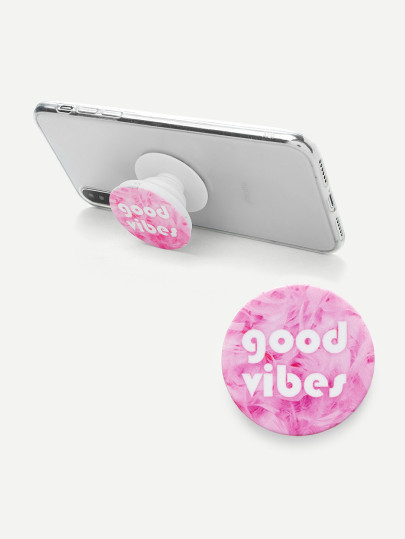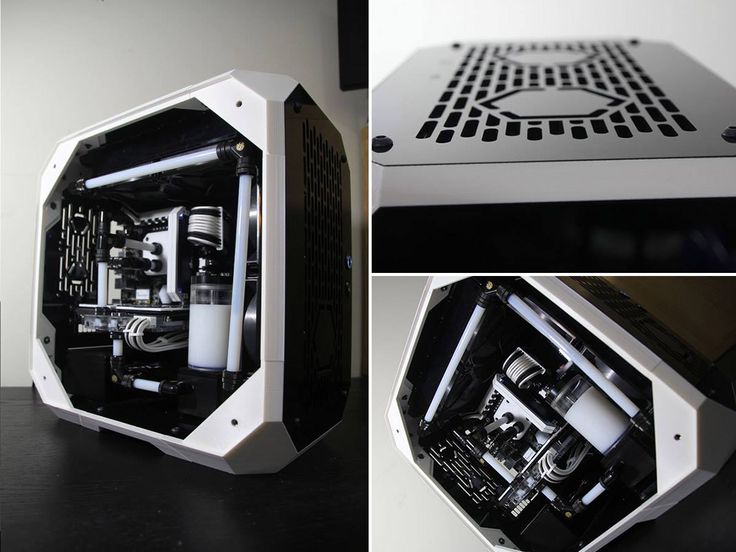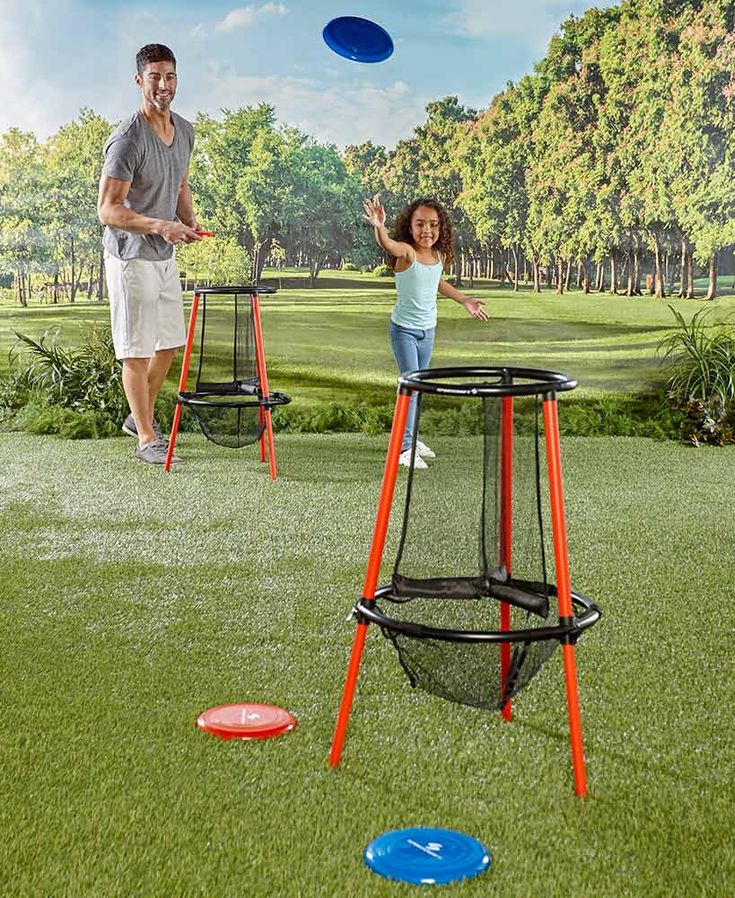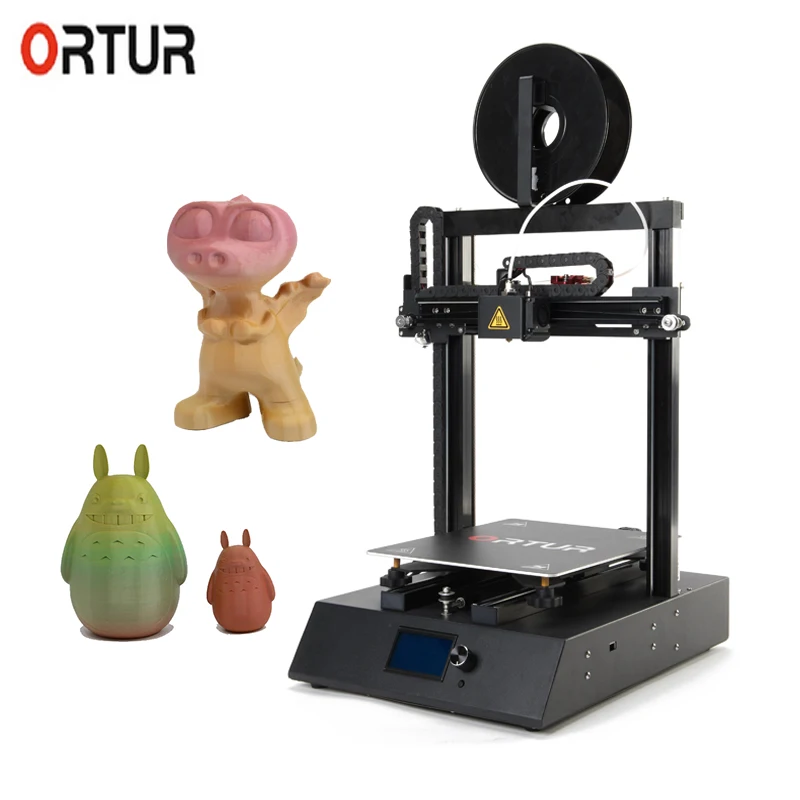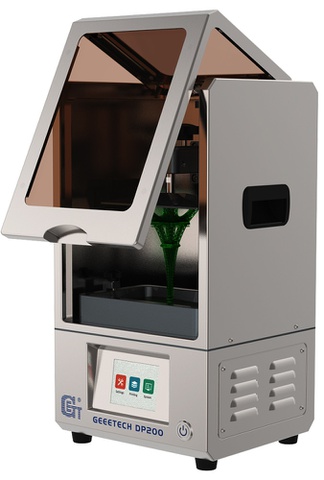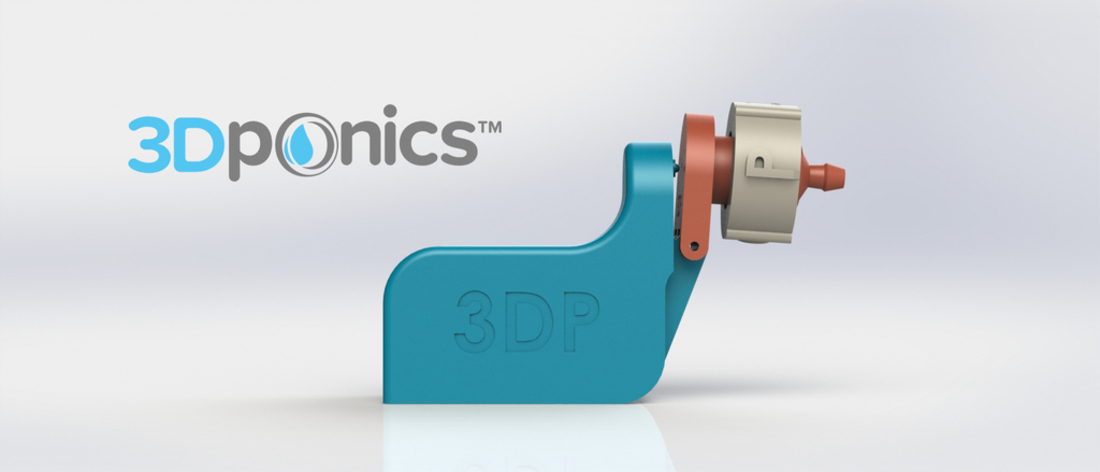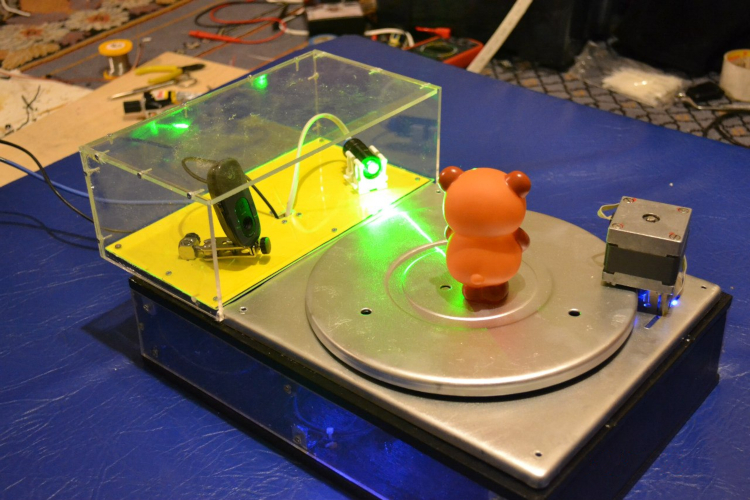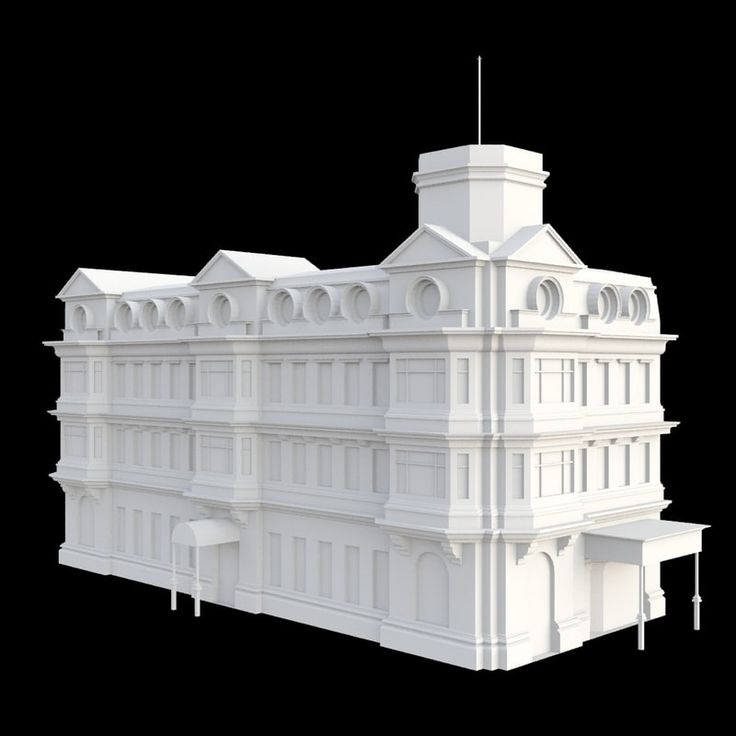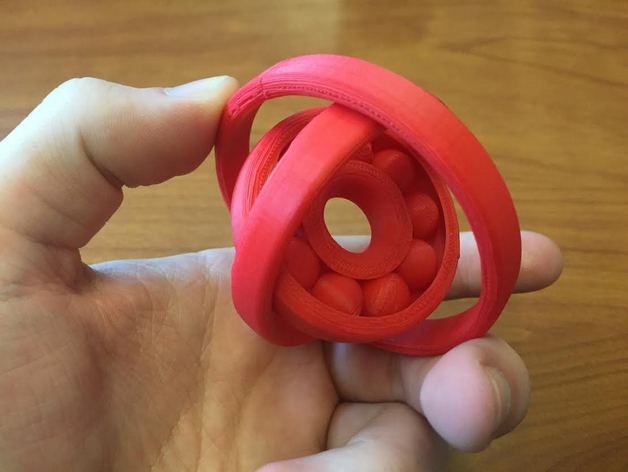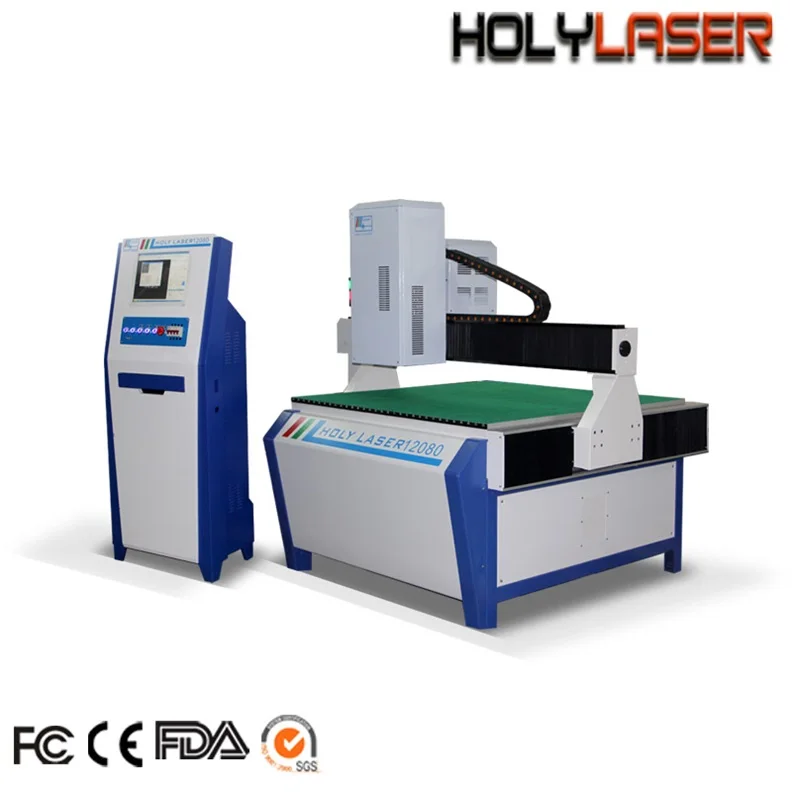Clear 3d print filament
Which is the Best Clear 3d Filament - Ultimate Guide
Everyone goes through various struggles when choosing the clear filament for the first time. There are several types of clear filament on the list.
So if you have trouble making your decision, you are just getting the start, or you need to test all the material – don’t worry.
You are in the right place. Here are so many plastic materials could be used in 3d printer. The most commonly used clear or transparent 3D printer filaments are PLA, PMMA, PETG, PET, Clear ABS, Polycarbonate, and TPU. Let’sLet’s talk about the positives, negatives, and best printing tips one by one.
The natural PLA resin is not clear. It has a very faint yellow tinge. If you compared with clear PLA filament from different manufacturers, there will be a slight difference. The tip is the process temperature. If the temp setting is higher, PLA resin could be perfect recrystallization. Then the filament will be more transparent.
The transparency is different from the resin manufacturer. There are two manufacturers for PLA raw resin. One is NatureWorks, the other is Hisun, We have made opacity tests with 4032D, 4043D(from Naturelwork), and 190(from Hisun), The opacity of 190 is much better than 4032D and 4043D.
Liking ABS, PLA is a commonly used filament in 3d printing. It is biodegradable and has excellent properties. Translucent PLA filament is one of the easiest to print clearly and get good results. To get the smooth finish of the surface, sanded is needed after printed. The part is close to the clear after filed.
Choose the right sandpaper is essential. This depends on the layer height in the setting. Thicker layers need courser sandpaper. Then use more delicate and finer grits, sanding in a circular motion each time (this bit is crucial because you’re trying to remove all surface imperfections). Start at the start, maybe 800 grit, and upwards in 200 increments from there. Finish with 3000 or higher grit to get a smooth finish.
The nature of abs is not transparent.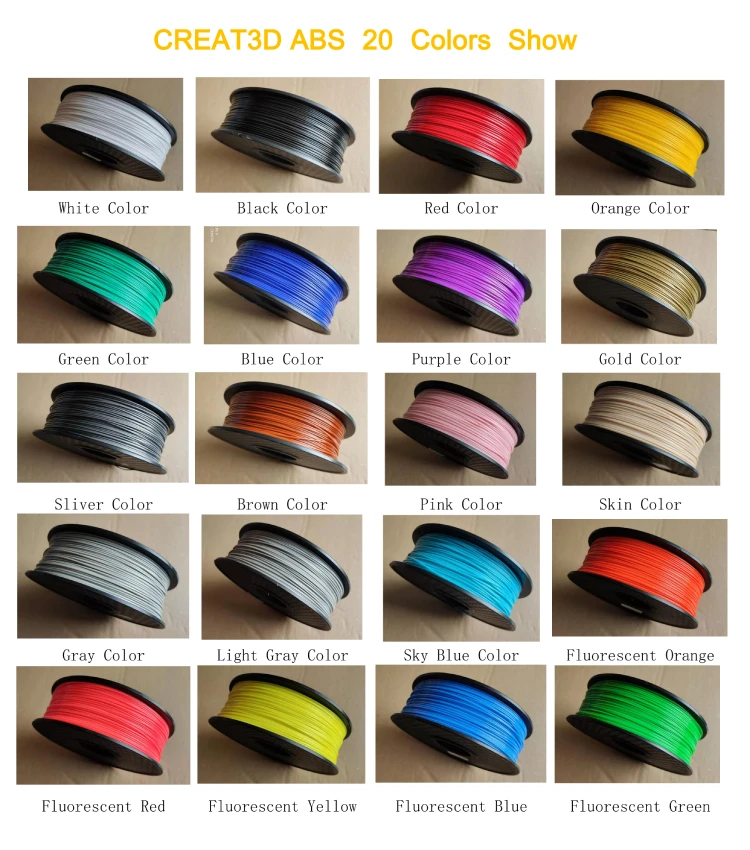 Clear abs are the particular type of abs material. The short name is MBS. Other additives will add to make it clear.
Clear abs are the particular type of abs material. The short name is MBS. Other additives will add to make it clear.
Clear abs filament cannot print as clear as the material. It needs to be post-print finished with Acetone vapor smoothing.
PETG is a durable clear 3D filament with excellent layer adhesion (almost unbreakable) and less shrinkage than other filaments; it’s great for 3D printing clear, big stuff that won’t break under pressure. It is odorless when printing and often produces clear, smooth finishes. Meanwhile, PETG has abs material’s flexibility and PLA’s strength.
PETG can’t smooth with acetone pour, but it can sand. Compared with PLA sanding, PETG printed object is smoother, which means that you need to use higher grit.
PMMA is the most transparent material so far. It has high strength and impact resistance.
PMMA is commonly used to replace glass in a particular application, such as cellphone screen and sunshine glass. The opacity of pmma is about 92%, much more than other clear plastic.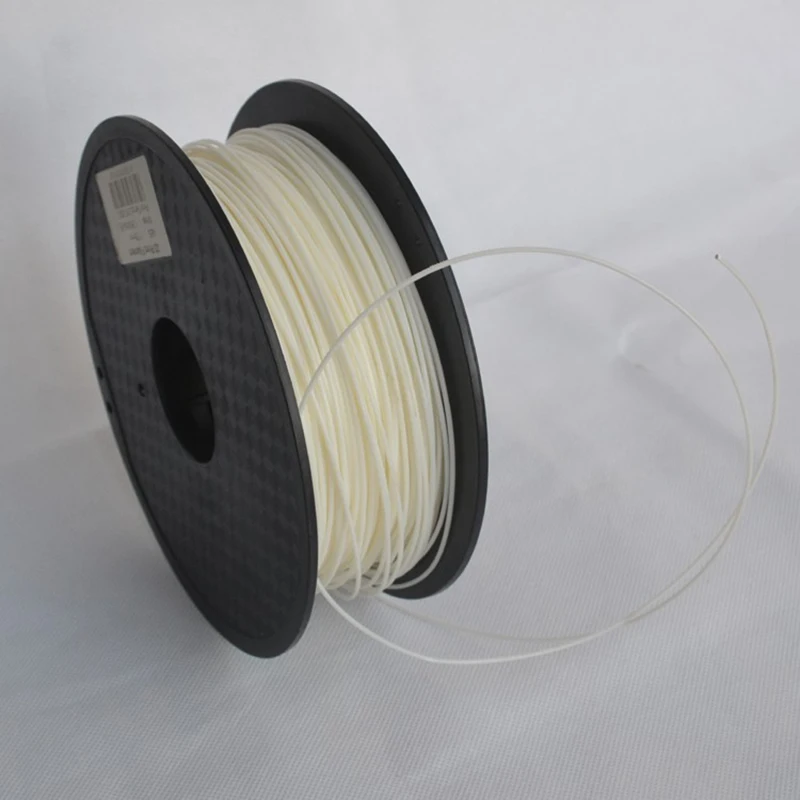
Polycarbonate
Polycarbonate is an extremely durable and optically transparent 3D printing filament that should print in a warm environment. Its durability can be bent repeatedly without cracking, making it great for creating all sorts of hipster jewelry.
But seriously, Polycarbonate (PC) is an immensely underrated material to print. It finishes with a nice glossy sheen to it. It needs a very hot extruder to print it usually, and if you’re looking for translucent results, we’d recommend going even hotter still (300 C+).
A great advantage with PC is that it can smooth with acetone like ABS to bring out more apparent results.
TPU is the only flexible material used for clear parts. It has good elongation and flexibility. Due to this property, Tpu is commonly used in bracelets and use wine and charge wine.
About the Tpu filament, printer settings are different from other materials. The extruder structures are different, and the printing speed is slower.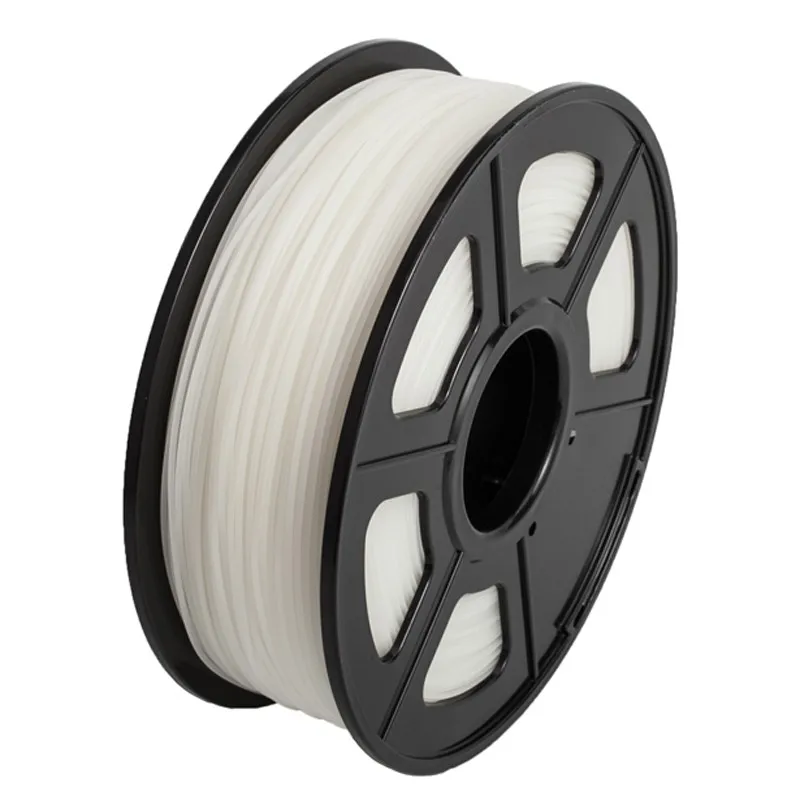 For the details, we will write on the next page.
For the details, we will write on the next page.
Summary
PETG is your first choice for clear filament. It has suitable property and is nicely finished. Meanwhile, if you need flexible material, TPU has the advantage.
Need Any Services? Contact Us Now!
How to 3D Print Clear Filament, More Clearly
Clear 3D printing can be a bit of an enigma, the success of your clear prints down to a number of things.
In this guide, we’ll take you through which materials can be printed clearly, and cover the steps you can take to maximize the clarity of your clear prints.
If you’ve tried it before, ended up watching countless videos explaining how to 3D print transparent filaments and are still non the wiser – this ‘how to print clear filament’ guide should clear things up for you (sorry, although we can’t promise that will be the last pun in this article).
What is Clear 3D Printer Filament?
Clear filament is translucent, meaning it lets some light through and looks clear if you print with the right settings and finish your print correctly.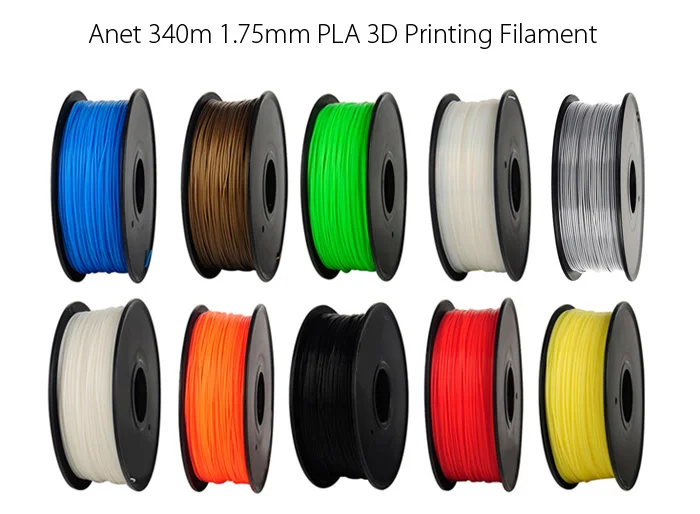 While translucent, it’s impossible to print 100% clear models, but when printing translucent filaments like clear PLA, PETG, ABS, and PMMA, they’re still called clear filaments.
While translucent, it’s impossible to print 100% clear models, but when printing translucent filaments like clear PLA, PETG, ABS, and PMMA, they’re still called clear filaments.
How to 3D Print Clear Filament: Best Practices
Different filaments have different tendencies, so it’s important you know what you’re dealing with to get the best results.
What are you trying to print, how are you printing it, and what are you printing it with – these are all questions to ask yourself.Want the best translucency? Print 1 layer thick.
The STL Model
It doesn’t matter how clear a clear filament you use if your STL file is solid or extremely complex. The best clear filament won’t keep an internally complex model clear, no matter what you do.
Every layer of filament, each extra layer deep – that’s more and more light being dispersed inside your print.
For example, 1 window is pretty clear. But if you stacked 100 windows in front of each other, you’re probably not going to see a huge amount of light coming through the other end.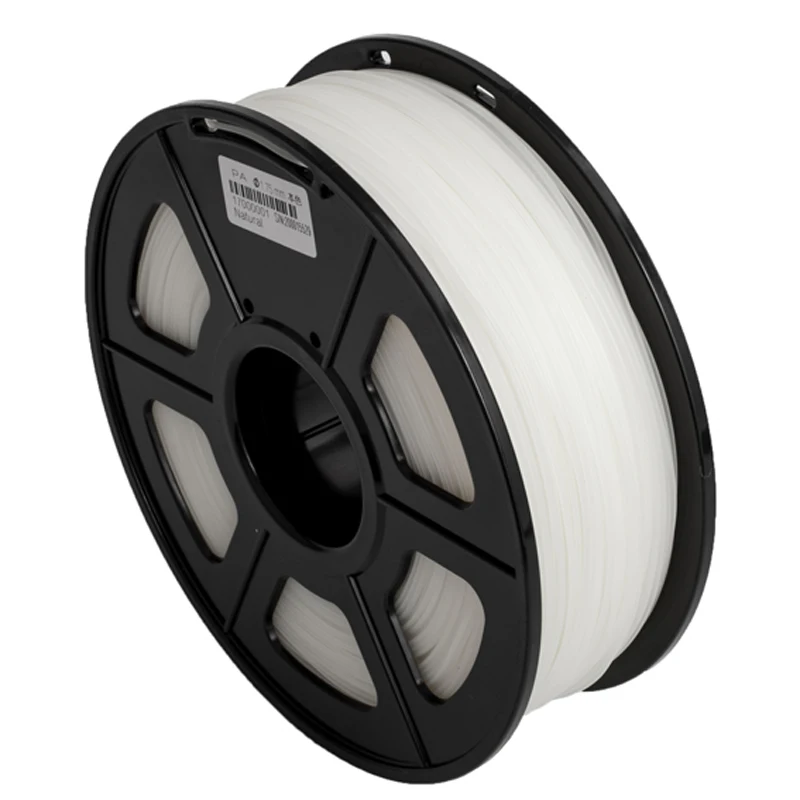
Each layer refracts the light further – so clear ABS filament (or any other material) will never create perfectly clear prints unfortunately, simply due to limitations with your printer.
But there are things you can do to improve the translucency so that it will allow light to pass through it.
So for 3D printing clear filaments:
If you want to make a model that’s got high translucency, we recommend printing very thin walls (ideally only 1 layer thick), with no or very little infill.
3D Print
Slow, Hot and BIG LayersIt helps if you print most clear 3D printer filament at the top end temperature that they’re recommended at, this keeps the definition between each layer as minuscule as possible.
You may lose a little detail, but you should gain smoothness. And in this game smoothness means more light passing through.
You also want to print a little slower than normal.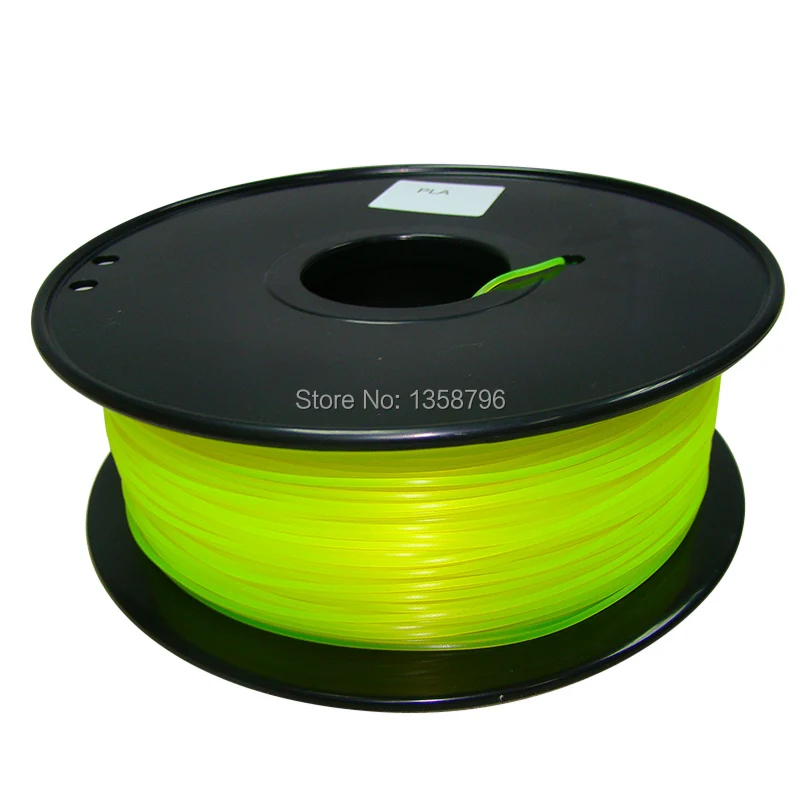 Ideally, your printer wants to be very accurate, the more accurate your printer – the better your prints look typically, and the clearer they’ll look.
Ideally, your printer wants to be very accurate, the more accurate your printer – the better your prints look typically, and the clearer they’ll look.
Make sure your belts are appropriately tight, so that there’s no overshooting of the print head (even by fractions of a millimeter) that could lead to less accuracy.
Also print with a larger layer height. If your layer height is larger, you won’t need as many layers. So it may make sense to print thicker layer heights and even using larger nozzle sizes.
However, if your printer is really accurate, printing very thin nozzle diameters can also yield nice results on 1 layer wall thicknesses.Our clear ABS filament acetone smoothed
Which is the Best Clear Filament?
Let’s take a look at the various options you have in the form of transparent 3D printing filaments. The positives, negatives, and best printing tips for each.
The most commonly available clear or translucent 3D printer filaments are: PMMA, PETG, Clear (Natural) PLA, Trans Clear ABS and Polycarbonate.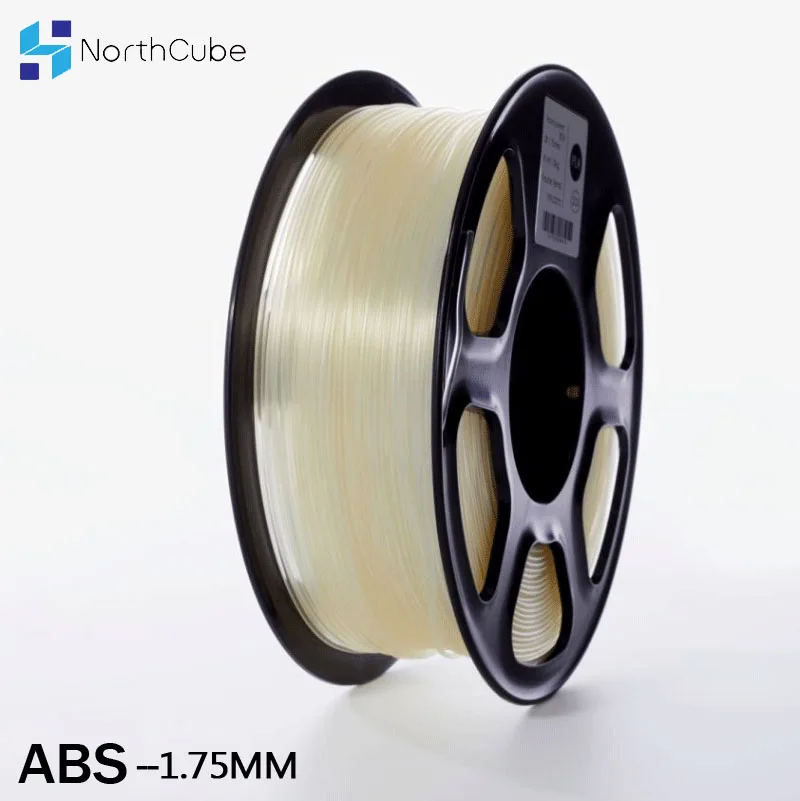
You may find that transparent PLA filament is the easiest to start with, but we’ll cover all the clear 3D printing filament you can print below.
It goes without saying that you’ll get out of this what you put into it. If you’re using cheap, poor-quality filament that isn’t either as clear as it could be, then your results will be restricted.
Clear PLA Filament
(this RC Spitfire wing is printed in our clear PLA with a 1 layer skin)A lot of natural PLA filaments aren’t actually clear PLA filament, but the good quality ones are. Ours is about as clear as PLA gets, although it has a very faint yellow tinge to it which is natural with PLA – you can just see this in the Spitfire wing above.
Like ABS, this is a commonly used filament. It also has the added benefit of being biodegradable, so less damage is inflicted on the environment, so you can feel a little better about using it.
Translucent PLA filament is one of the easiest to print clearly and get good results.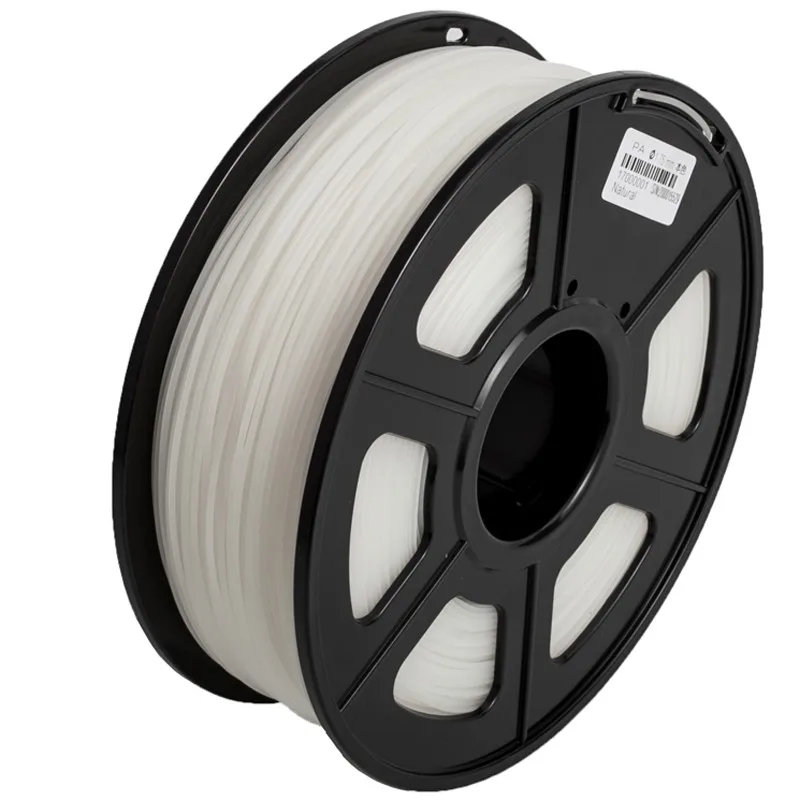 Good quality PLA can also be easily sanded & polished afterward – which for this material is the best way of getting an extremely smooth finish to let light pass through uninterrupted.
Good quality PLA can also be easily sanded & polished afterward – which for this material is the best way of getting an extremely smooth finish to let light pass through uninterrupted.
It’ll be as close to transparent PLA filament as possible.
It’s important to use a fine grit, depending on the layer height you printed with. Thicker layers and you’ll need coarser sandpaper. Then use finer and finer grits, sanding in a circular motion each time (this bit is important because you’re trying to remove all surface imperfections).
Start at maybe 400 grit, and upwards in 200 increments from there. Finish with 3000 or higher grit to get a really smooth finish.
If you can do this on both sides of a print wall, you can get a very clear finish.
For best results make sure the sandpaper is wet, and don’t be too aggressive and heat up the surface by going too fast.
Clear ABS Filament
ABS isn’t naturally clear – like the other materials. This means that we need to blend it with an additive to make it clear.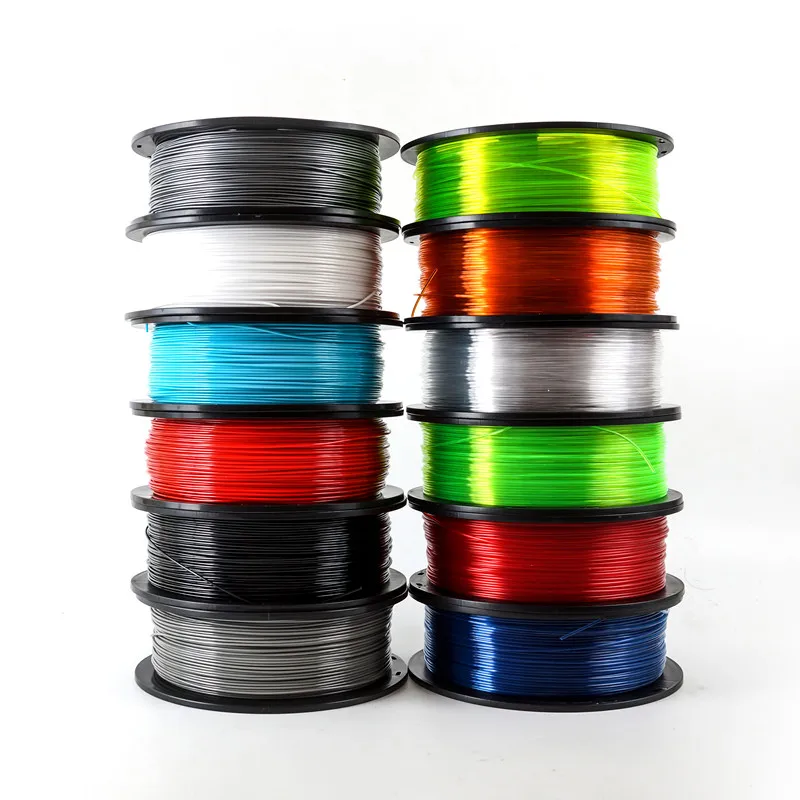 And by clear, really we mean translucent at best.
And by clear, really we mean translucent at best.
If you absolutely need to print in ABS, then using clear or translucent colors of ABS is a good compromise – but ultimately it won’t print as clear as some of the other materials.
ABS can be post-print finished with Acetone vapor smoothing though, which is a bonus. This means you can get the layers very smooth – which helps light transmission immensely.
Clear PETG Filament
Translucent 3D printed vase in orange PETGPETG is a really durable clear 3D filament with excellent layer adhesion (almost unbreakable) and, less shrinkage than other filaments. It’s great for 3D printing big clear models that won’t break under pressure.
It is odorless when printing and often produces clear, smooth finishes. Thus making it the ideal material when you want something with a bit of flex that won’t break.
It can’t be smoothed with acetone though, and although it can be sanded, it doesn’t sand as nicely as PLA.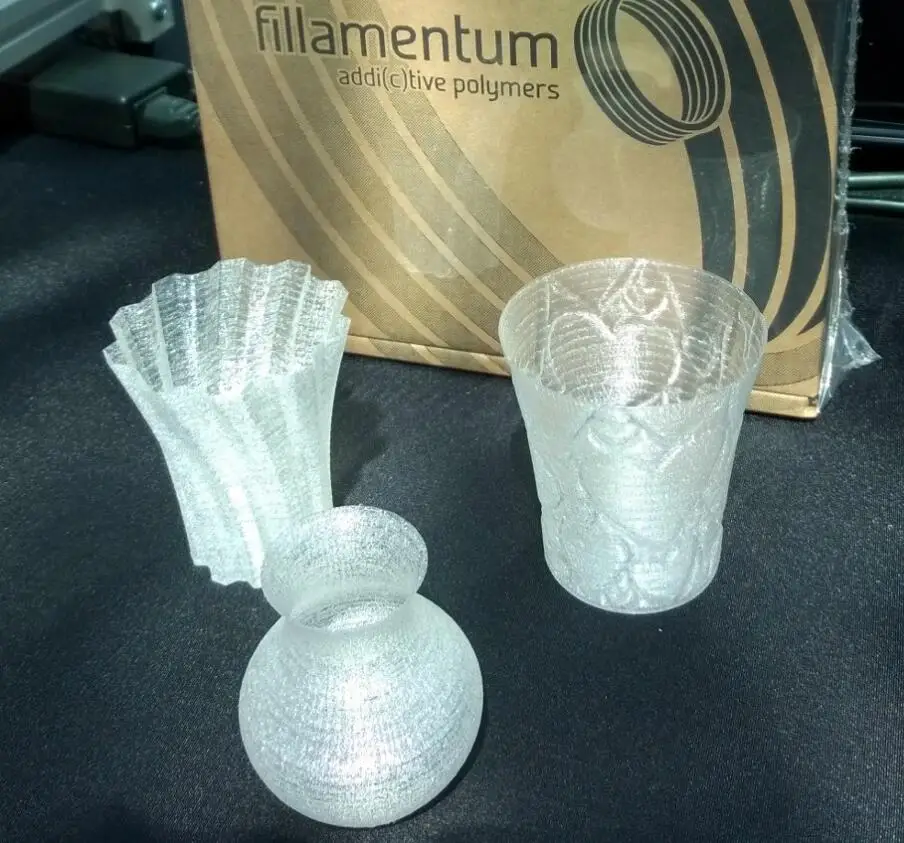 You should find PETG prints quite nicely though, meaning it’s less likely to require post-print finishing.
You should find PETG prints quite nicely though, meaning it’s less likely to require post-print finishing.
We recommend PETG as being perhaps the most transparent 3D printer filament needing the least amount of post-printing work to achieve an acceptable result.
Polycarbonate Filament
3D print clear plastic 1 layer thick like the vase above, but in PCPC is an extremely durable and optically transparent 3D printing filament that is best printed in a warm environment.
Due to its durability, it can be bent repeatedly without cracking, making it great for creating all sorts of projects.
It finishes with a nice glossy sheen to it. It needs a hot extruder to print it normally, and if you’re looking for translucent results, we’d recommend going even hotter still (260°C+).
A great advantage with PC is that it can be smoothed with acetone similar to ABS to bring out clearer results.
- Read our full guide to Polycarbonate filament
PMMA Filament
If you’ve used this filament before, you’ll know that it is a clear plastic acrylic material with high impact strength. Due to its strength and impact resistance, PMMA is commonly used to replace glass in certain applications.
Due to its strength and impact resistance, PMMA is commonly used to replace glass in certain applications.
Typical PMMA grades allow up to 92% of light to pass through its surface, which is more than other plastics and, surprisingly, even most glass.
PMMA is available in a nice range of colors, and prints quite clearly in comparison to other materials.
Best Places to Buy Clear 3D Printer Filaments
Now that you’ve got a good idea of clear 3D printer filament types and their uses, you’re probably wondering where the best places are to buy them.
Not only can clear filaments get expensive, they also need to be treated and handled differently than normal filaments.
Because of this, they are a little more awkward to use, and so it can be difficult finding a supplier that won’t let you down by cutting corners.
3DSourced is reader-supported. When you buy through links on our site, we may earn an affiliate commission. Learn more
Most of the readily available clear 3D printer filaments are PLAs, so it’s worth remembering that PLA is seldom really fully transparent.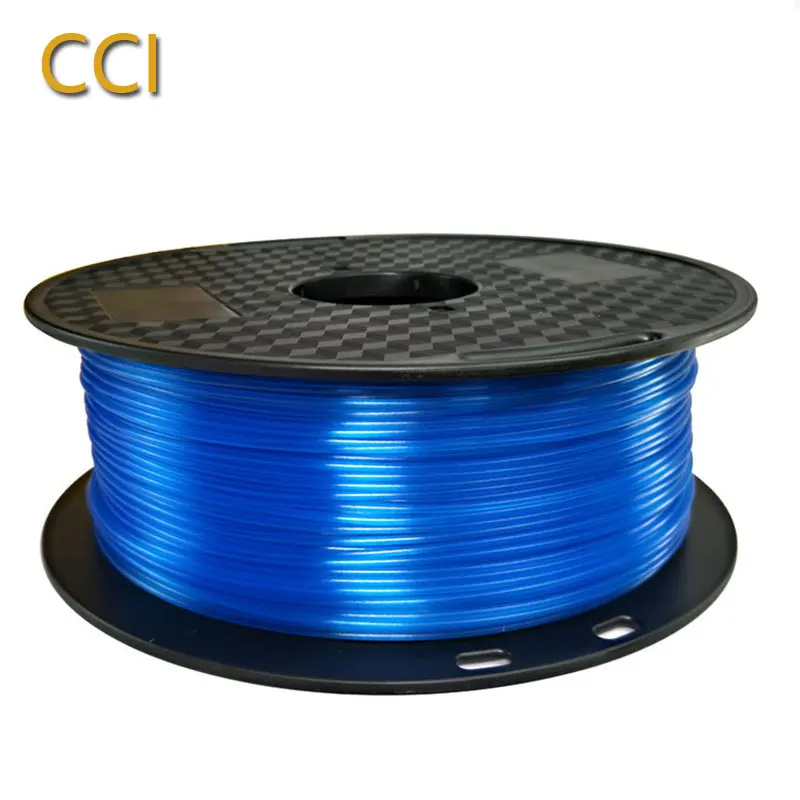 Many negative reviews and conversations about clear PLA products argue that it isn’t completely see-through. Before adding to your cart, note that ‘clear’ PLA may come out yellow and translucent.
Many negative reviews and conversations about clear PLA products argue that it isn’t completely see-through. Before adding to your cart, note that ‘clear’ PLA may come out yellow and translucent.
Here are the most reliable places to get your clear filaments, as well as what kinds they sell.
MatterHackers
- Matterhackers translucent PLA — Available here
- Clear Ultimaker filament — Available here
MatterHackers is a household name in 3D printing, and carries an impressive array of filaments like their very own NylonX.
MatterHackers have a range of translucent and transparent PLAs available. The pro range of translucent PLAs lives up to MatterHackers’ reputation by being sturdy, reliable, and complete with guides for new users.
For transparent PLAs, you should check out their Ultimaker filament. Like all clear PLA filament, it will have a yellow-ish hue while printing, and so doesn’t offer full transparency as the name suggests. However, the quality is top-notch and the prices are not to be sneezed at.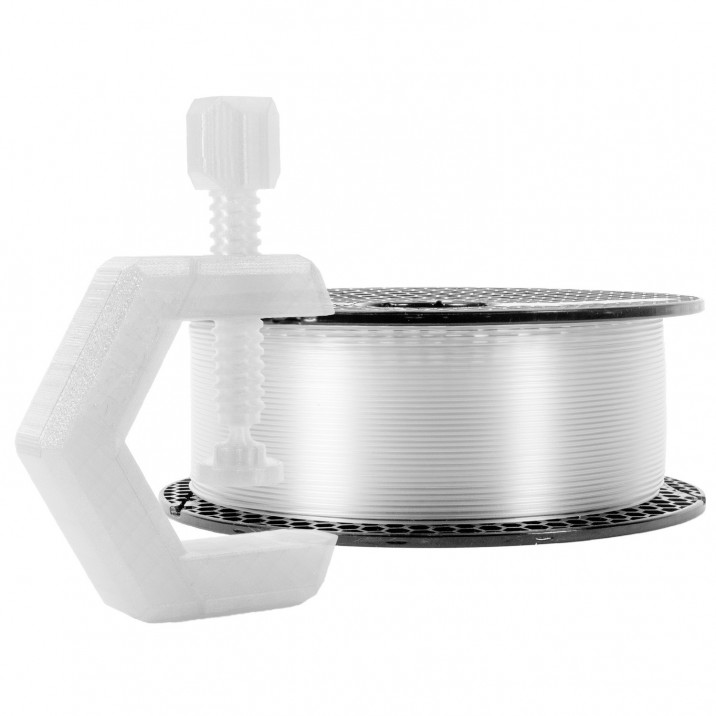
ProtoPlant
- Proto-pasta clear PETG filament — Available here
- Iridescent ice clear PLA — Available here
ProtoPlant makes their own brand of PLA filament, which they’ve named HTPLA (High-Temperature PLA) that has greater clarity than standard materials.
HTPLA is available as clear filaments, each with different levels of transparency. Their Iridescent Ice and Cunning Clear filaments are the best choice for those of you who want see-through filaments without spending too much on rarer, more specialized products.
Solutech
- Clear PLA — Available here
- Clear PETG — Available here
If you want something truly unique, or are simply bored of printing with standard 3D printer filaments, then I highly recommend you check out the range offered by Solutech.
They specialize in what could be described as ‘gimmick’ filaments, from translucent PLA to phosphorescent filaments that glow in the dark!
Best Uses for Clear 3D Printing Filaments (& Projects)
There are a lot of cool uses for clear filaments, some of which you’ve likely already thought of.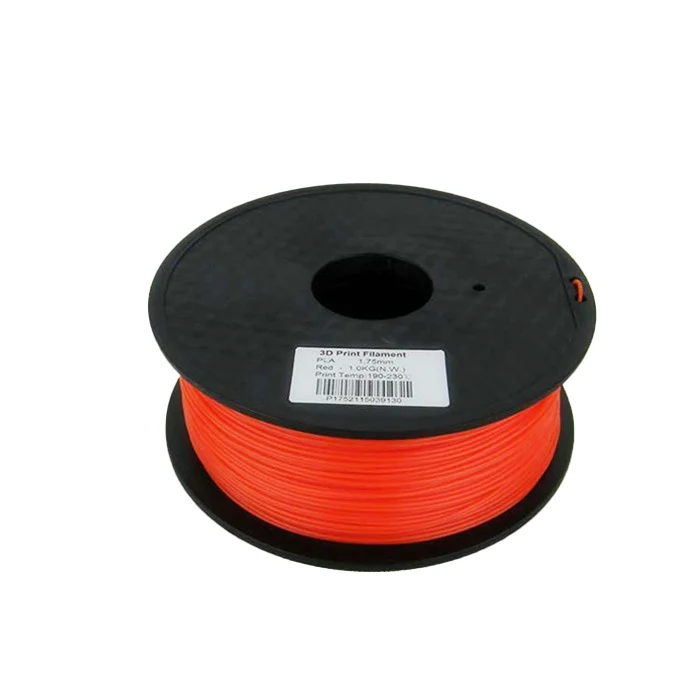 Personal and professional printers will find plenty of cool and practical uses for clear 3D filaments.
Personal and professional printers will find plenty of cool and practical uses for clear 3D filaments.
From cool-looking designs to sellable prints, here are some of the best ways to put clear filaments to use.
Lampshades and Light Effects
My personal favorite, and perhaps the most immediately obvious, use for clear 3D printer filaments is for lighting effects.
Anything from a simple lampshade to a colorful LED-lit display is a great way to put transparent filaments to use. After making a clear lampshade, you can even jazz it up with a 3D pen to make any kind of art you like!
Containers and Storage
We all have that one drawer in our kitchens that contain a boatload of miscellaneous stuff that, for one reason or another, we just didn’t want to throw away. In these drawers, you’ll often find loose batteries rolling around, pens and pencils of all colors and stages of use, and maybe a few lighters or matchbooks.
By making a storage box or tube with clear 3D printer filament, you’ll never have to rifle around the drawer again, praying your roaming hands don’t come across something sharp.
This won’t only save you precious time and sanity the next time your remote dies, but will also tidy up your home and make it more organized. You can even make storage boxes for different recyclables like lightbulbs, batteries, or leftover plastic shavings from your finished prints.
Homemade Tumblers
While not all 3D printer filaments are food safe, making your own kitchenware is a fun and practical way to spice up your home. Using clear filaments to make glasses and cups is a creative exercise, and simple enough that anyone can make one.
If you do plan on using your clear 3d filament to make cups and glasses, then be sure to follow our guide on food-safe 3D printer filament.
Glass Replacement
To replace something glass, you need an exact fitting sheet. Windows, phone screens, and protective guards can’t just be thrown on and expected to stay.
Measuring and cutting glass for replacements and repairs can be time-consuming, even more so if you get an inexactly measured pane.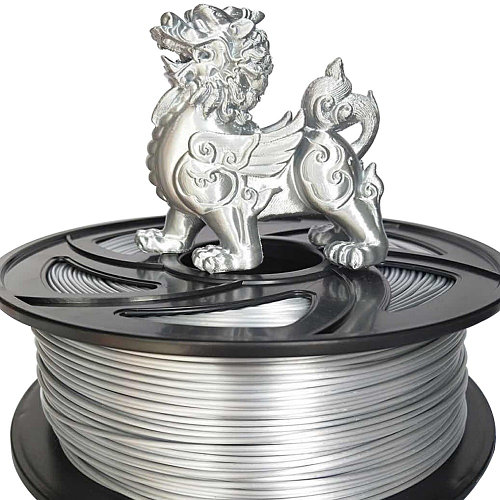 If you need a see-through replacement for something, or simply need a temporary fill-in for important areas like windows or greenhouse walls, clear 3D printer filament is a great way to save money and time.
If you need a see-through replacement for something, or simply need a temporary fill-in for important areas like windows or greenhouse walls, clear 3D printer filament is a great way to save money and time.
As a professional, you can even use clear filaments to create phone screen protectors or window panes with cool designs for your customers.
Art
The applications for translucent and transparent filaments in art should be as clear as the materials themselves. Using transparency as an artistic tool opens brand new doors for lighting effects and visually impressive designs.
Whether you’re creating pieces to display in your home, gift to friends, or sell as part of your business, there are plenty of ways to spice up any artwork with transparent materials. If you’ve already been making and selling things with your 3D printer, releasing clear editions of existing works is a great way to add to your store.
Summary: 3D Printing with Clear and Translucent Filaments
Transparent 3D printing is quite a finicky business.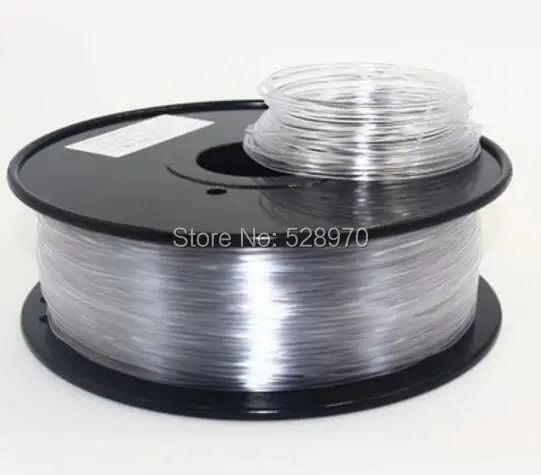 Even the slightest miscalculation in nozzle temperature, printing speed and cooling can all affect how clear your print is.
Even the slightest miscalculation in nozzle temperature, printing speed and cooling can all affect how clear your print is.
While it isn’t rocket science, there’s certainly a method to it.
It’s worth bearing in mind that each printer and filament often requires specific settings, meaning what works for clear ABS almost certainly won’t work for clear PETG filament.
With that in mind, you’re really best getting one material you think will be most suitable to what you need. Then experiment with the printing and post-printing techniques mentioned above to get the best results.
Best 3D Printing Filaments (Professional)
3D printing is increasingly being used in commercial and manufacturing applications. Industrial printing requires special filaments. They are characterized by increased structural support. We offer a list of the 9 most popular professional consumables:
#1. Professional 3D Printing Filament: Carbon Fiber
Carbon fiber is often added to PLA, ABS, PETG to improve stiffness.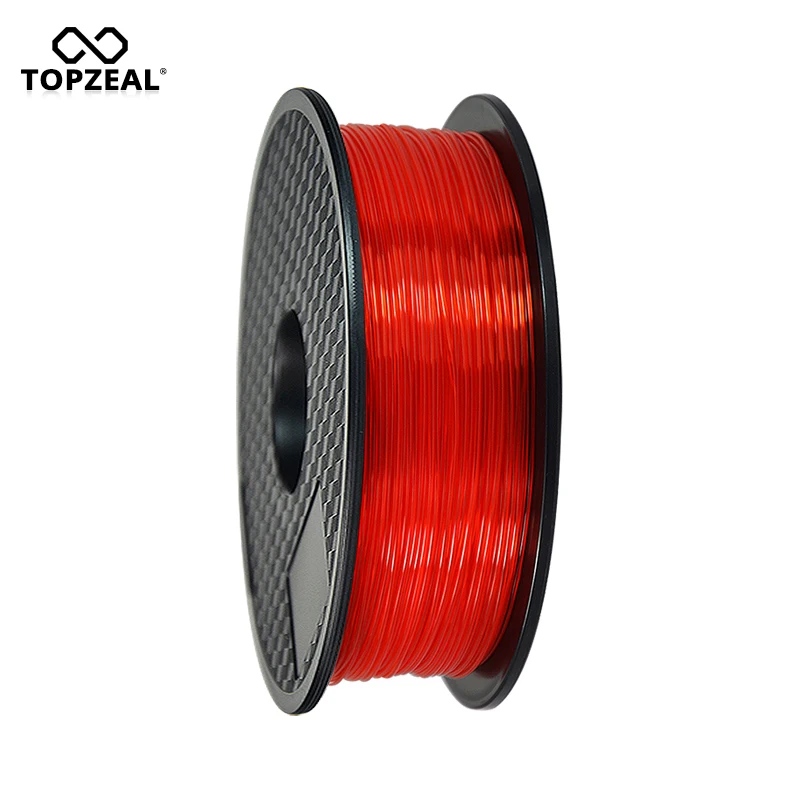 Such connections are excellent for use in aggressive environments. The only negative is that the use of these consumables contributes to the rapid wear of the extruder (especially if it is made of soft metal).
Such connections are excellent for use in aggressive environments. The only negative is that the use of these consumables contributes to the rapid wear of the extruder (especially if it is made of soft metal).
#2. Professional 3D Printing Filament: PC-ABS
ABS Polycarbonate Alloy is a rigid thermoplastic that combines the strength and heat resistance of polycarbonate with the flexibility of ABS. The material is characterized by hygroscopicity, therefore it causes certain difficulties when working with it. Another disadvantage is that the thread must be printed at a high temperature (at least 260°C). Since PC-ABS tends to warp, a high temperature of the printed layer (at least 100°C) is needed.
#3. Professional 3D Printing Filament: HIPS
High performance polystyrene is a copolymer that combines the hardness of polystyrene with the elasticity of rubber. Combined with ABS in a dual extrusion printer, HIPS is an excellent support material.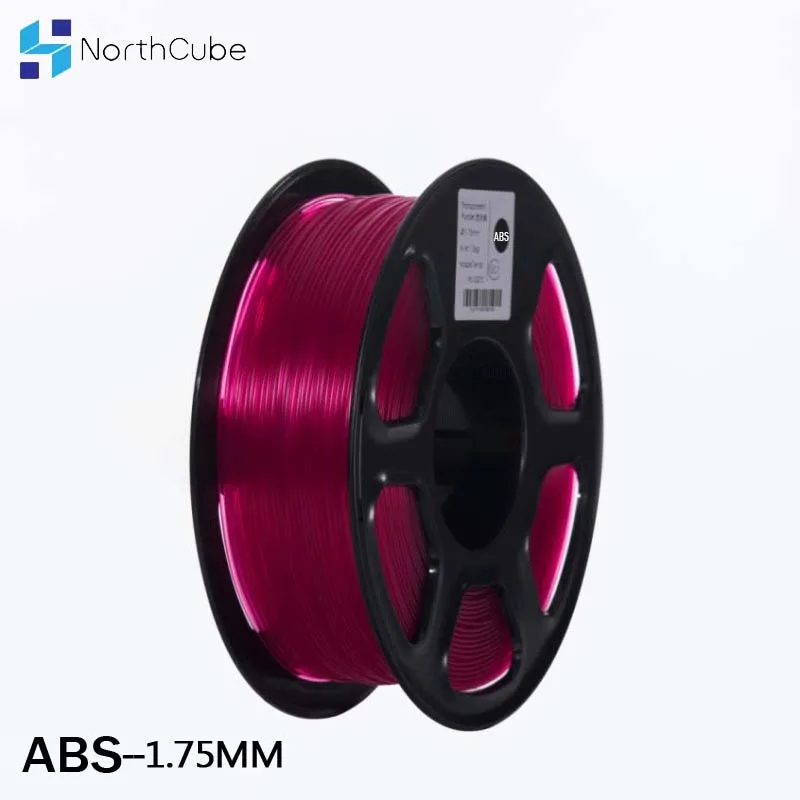 Easy to sand, glue or paint. Doesn't mix well with other threads (except ABS) as they can be damaged by limonene.
Easy to sand, glue or paint. Doesn't mix well with other threads (except ABS) as they can be damaged by limonene.
#4. Professional 3D printing filaments: PVA
Polyvinyl alcohol is water soluble, so it does an excellent job as a support material. Unlike the previous consumable, it is compatible not only with ABS, but also with PLA and nylon.
#5. Professional 3D Printing Filament: ASA
An alternative to ABS designed to be more weather resistant. Acrylonitrile styrene acrylate is not affected by chemicals, high temperatures. This is a durable and tough consumable that is easy to use in additive printing.
#6. Professional 3D Printing Filament: PP
Polypropylene is a strong, flexible, lightweight, chemical resistant and food safe material. True, the thread has a number of disadvantages, including poor adhesion and difficulty in deformation.
#7. Professional 3D printing filaments: Acetal (POM)
Polyoxymethylene (POM) also known as acetal.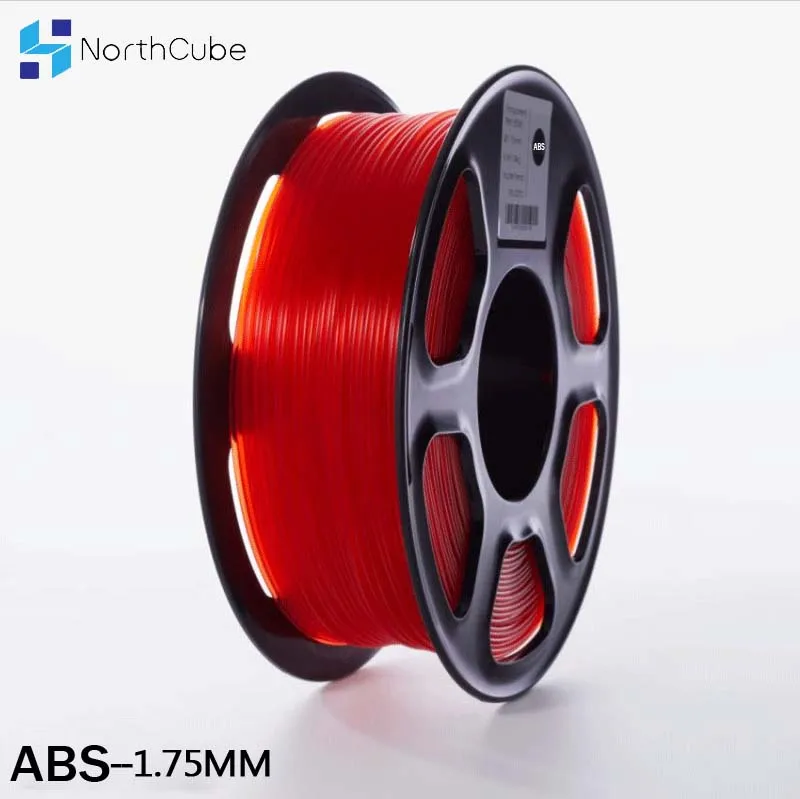 Differs in durability, rigidity, wear resistance and, the most important, low coefficient of friction.
Differs in durability, rigidity, wear resistance and, the most important, low coefficient of friction.
#8. Professional filaments for 3D printing: PMMA
Polymethyl methacrylate is a rigid, impact-resistant, transparent material. It cannot boast of flexibility and ease of printing.
#9. Professional 3D Printing Filament: FPE
Flexible polyester is a flexible and soft material that boasts good adhesion, moderately high heat and chemical resistance.
Source: Ink-Market.ru.
Techno Print 3D Company
This is our first review of the most popular and inexpensive 3D printers for 2020. The list will include the best-selling devices in two price ranges (up to 30 tr and up to 60 tr). Printers working with both plastic filament (FDM) and photopolymers (LCD/DLP) will be presented. This list will always be up to date, as it is periodically updated and supplemented. Read more→
The Chinese company Dazz3D announces the launch of the project on KickStarter and accepts pre-orders for Dazz3D Basic and Dazz3D Pro 3D printers.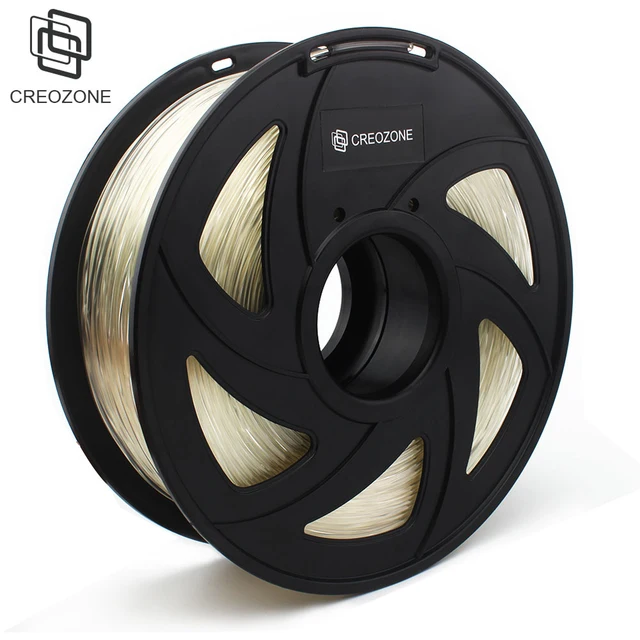 These revolutionary new devices are aimed at both the professional and amateur markets. Read more→
These revolutionary new devices are aimed at both the professional and amateur markets. Read more→
We all know that precise calibration of the 3D printer desktop is the foundation and the key to successful printing on any FDM printer. In this article we will talk about the main and most popular ways to level the "bed". So, as mentioned above, 3D printing without desktop calibration is impossible. We face this process Read more→
It's hard to go through a day today without hearing about 3D printing technology, which is bursting into our lives at an incredible speed. More and more people around the world are becoming addicted to 3D printing technology as it becomes more accessible and cheaper every day. Now almost anyone can afford to buy a 3D printer, and with the help of Read more→
The FormLabs Form 2 and Ultimaker 3 are perhaps the most popular 3D printers today, capable of high quality printing with incredible surface detail. Moreover, these two devices use completely different technologies, and therefore, there are a lot of differences between them.